Owning a dog comes with a bundle of joy and a few challenges, one of which is dealing with matted hair. If you've ever found yourself puzzled, asking "Why does my dog's hair get matted?" you're not alone. This comprehensive guide will delve into the causes of matted fur, the breeds most susceptible to this issue, and how to prevent and address it.
Key Takeaways:
- Understanding the reasons behind matted dog hair can help prevent this uncomfortable condition.
- Regular grooming and choosing the right tools are essential for maintaining a healthy coat.
- Professional groomers can offer tailored solutions for severe matting, especially in long-haired breeds.
The Science Behind Matted Fur
Matted hair in dogs is not just an aesthetic issue; it's a condition that can affect your dog's well-being. Mats form when loose, dead fur becomes entangled with live fur, creating tightly wound clumps. These can cause skin irritation and even lead to more severe skin conditions if not addressed. Dog breeds with long, curly, or double coats are more prone to developing mats due to the nature of their fur.
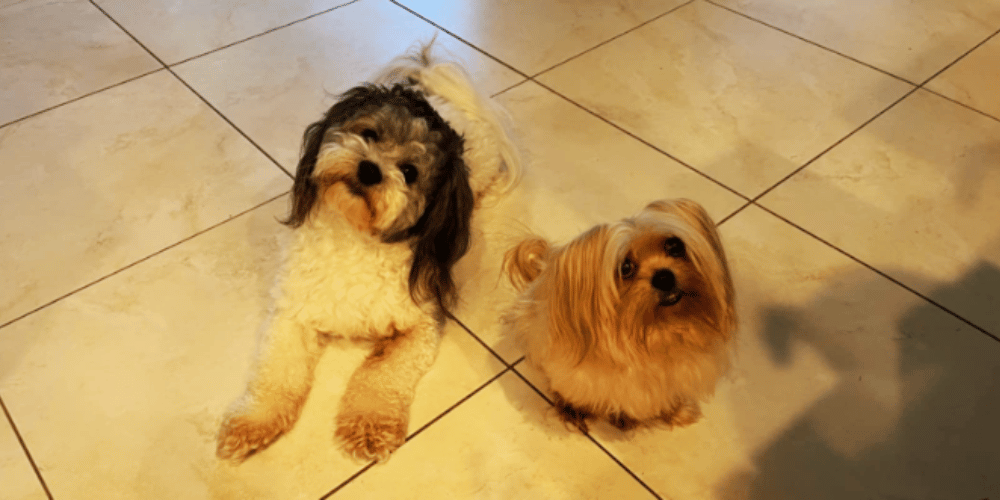
Recognizing Different Coat Types
Each dog's coat type plays a significant role in how prone they are to matting. Long haired dogs like Shih Tzus and Rough Coat Collies have flowing locks that easily tangle. Double coated breeds shed their undercoat, which can get caught in the topcoat. Curly coat breeds, such as Poodles, can develop mats as their hair wraps around itself.
The Role of Grooming Tools
Selecting the right grooming tools is crucial. A slicker brush is excellent for breaking up mats and removing loose fur, while an undercoat rake is designed for double-coated breeds to remove dead undercoat. Grooming clippers and dog clippers can be used for severe matting, but it's essential to be cautious to avoid cutting the dog's skin.
Regular Brushing: A Must for Prevention
Regular brushing is the most effective way to prevent matted dog hair. It removes loose dead fur and prevents it from tangling with the live fur. For breeds with more fur, brushing may need to be a daily routine, while others may require less frequent grooming.
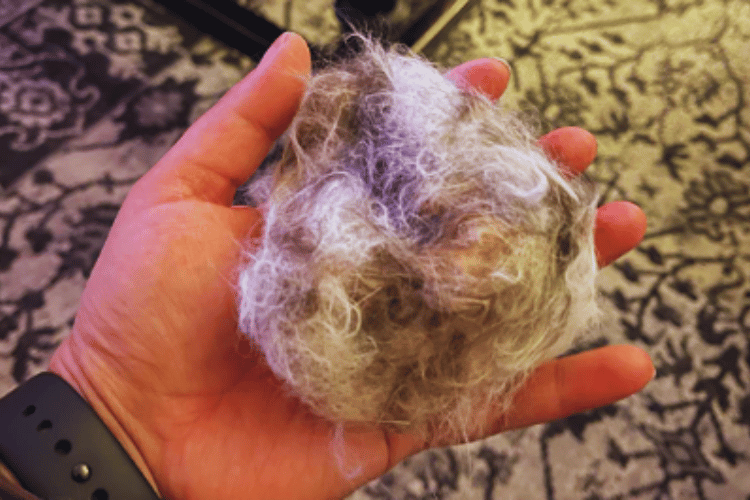
The Impact of Diet on Fur Health
Believe it or not, what your dog eats can influence the health of their coat. High-quality wet dog food can provide the necessary nutrients for a shiny, healthy coat that's less likely to mat. Supplements like omega fatty acids can also improve coat health.
Grooming Techniques for Different Breeds
Understanding your dog's hair type is essential when grooming. Different trimming lengths may be necessary for various parts of the body, and some breeds may benefit from a full body trim. Professional groomer advice can be invaluable in determining the best grooming routine for your pet.
The Trouble with Collars and Harnesses
Where a collar sits can influence matting. Friction from collars and harnesses can cause hair to become tangled, leading to isolated mats. It's important to check these areas regularly and consider using a harness that reduces contact with the fur.
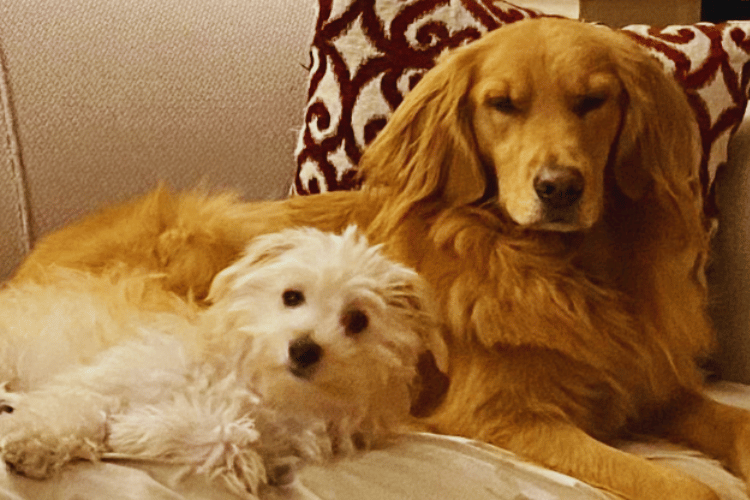
Bathing and Drying: A Double-Edged Sword
Bathing your dog is essential, but if not done correctly, it can contribute to matting. Always thoroughly dry your dog's coat to prevent tangles. A detangling spray can be a helpful addition to your grooming arsenal, especially for dogs with a corded coat.
When Mats Get Out of Hand
Severe matting requires professional attention. Professional grooming sessions can safely remove painful mats without harming your dog's skin. Grooming appointments should be scheduled regularly to keep your dog's coat in top condition. Matting in Different Environments Matting in Different Environments Matting isn't just a result of neglect; it can also be influenced by the environment your dog frequents.
For instance, dog owners who live in humid areas might notice their long haired dog struggling with tangled hair more often. Humidity can cause the fur to curl and knot more easily, leading to matted dog fur. Similarly, dogs that play in water or have access to outdoor areas with burrs and sticky plants can find their fur in a tangled mess, as foreign particles encourage hair mats to form.
On the flip side, those living in dry climates aren't free from matting woes either. Dry air can dehydrate a dog's skin and fur, making it brittle and prone to breaking. This broken hair can easily become entangled with healthy hair, causing mats tend to develop. Pet parents in such areas should consider using a leave in conditioner to maintain moisture in their dog's coat type. Additionally, after outdoor adventures, it's wise to regularly brush your dog to remove debris that could contribute to matting.
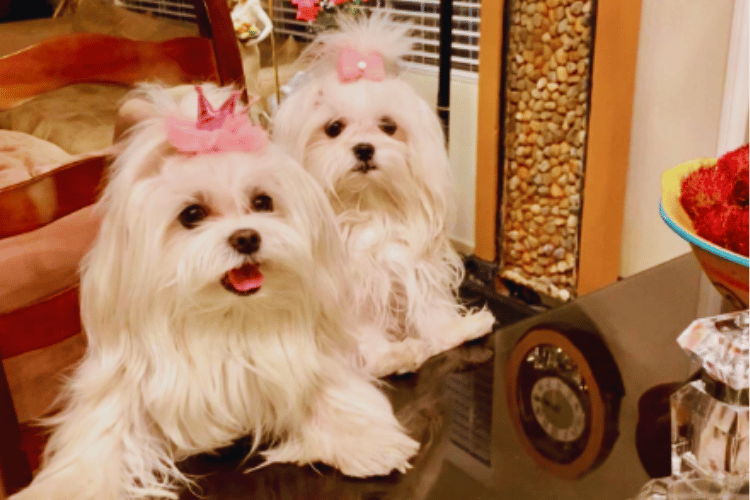
The Influence of Play and Sleep Habits The Influence of Play and Sleep Habits Believe it or not, your dog's play and sleep habits can contribute to their risk of developing matted dog fur. Dogs that love to roughhouse and play with other dogs or toys might end up with mats tend due to the constant friction and movement.
Long haired breeds like the Shih Tzu or mop dogs are particularly susceptible to this, as their playful antics can turn their luxurious locks into a tangled mess. Dog owners should brush your dog after playtime to prevent play-induced tangles from becoming a bigger issue.
Sleeping habits also play a role. Dogs that favor sleeping in tight curls or on rough bedding may experience more pressure on certain areas of their dog's body, leading to hair mats. This is especially true for long haired dog breeds that have a double coat, as the pressure can make the mat tighter and more difficult to remove. To help prevent this, dog groomer professionals often recommend using soft bedding and grooming your dog before bedtime to detangle any knots that may have formed throughout the day.
Environmental Factors Affecting Your Dog's Coat
When pondering over the question, "Why does my dog's hair get matted?" it's essential to consider the environment your furry friend spends most of their time in. Dogs that play outside regularly may encounter various elements like burrs, sticky seeds, and dirt that can easily become entangled in their fur.
These outdoor adventures, although fun for your dog, can lead to mats, especially in long-haired breeds that have fine, silky hair. It's not just the outdoors; even indoor environments with carpet fibers or rough textiles can contribute to the tangling of your dog's coat.
Moreover, the weather plays a significant role in the condition of your dog's fur. Humidity can cause the hair to curl and knot more easily, while dry conditions may lead to static electricity, which also promotes matting. Dogs that swim frequently or are bathed without proper drying techniques can suffer from mats as their hair clumps together when wet.
It's crucial to thoroughly dry your dog's coat after exposure to water to prevent matting. For dogs with a predisposition to matted hair, owners should be extra vigilant during certain weather conditions and adapt their grooming preferences accordingly.
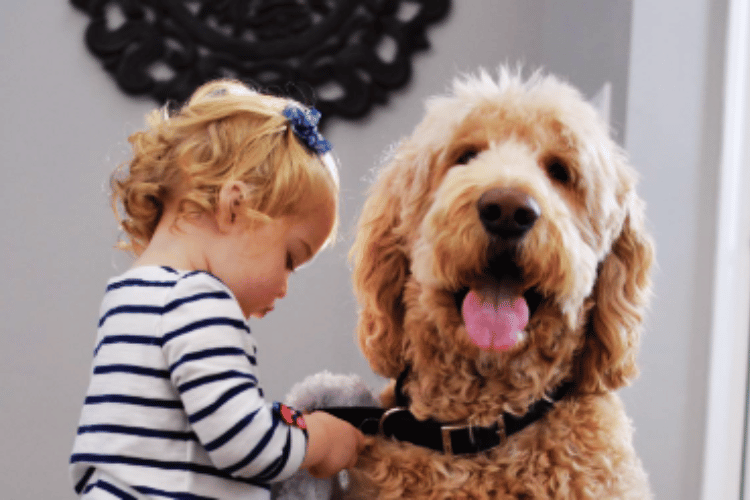
The Influence of Weather on Matting
When pondering over the question, "Why does my dog's hair get matted?" it's essential to consider the whims of the weather. Just as humidity can cause human hair to frizz, it can also lead to tangles and mats in your dog's fur. During the wet season, moisture in the air can swell the hair shafts, making them stick together and more prone to knotting. On the other hand, the dry, static-filled air of winter can cause your dog's hair to cling and tangle, especially in long-haired breeds.
Conversely, the blazing sun of summer can be just as culpable. Dogs love to bask and play under the sun, but prolonged exposure can dry out their skin and fur, making it brittle. Brittle hair is more likely to break and form mats.
Additionally, dogs may seek cool, shady spots in dirt or sand, which can further contribute to the formation of mats as debris becomes entangled in their coat. It's crucial to adjust your grooming routine to the seasons to help prevent matting due to weather conditions.
The Role of Allergies in Coat Health
Allergies are a common yet often overlooked factor when it comes to understanding "Why does my dog's hair get matted?" Dogs, much like humans, can suffer from a variety of allergies, ranging from food sensitivities to environmental triggers like pollen or dust mites.
These allergies can lead to itchy skin, causing your dog to scratch, lick, or chew on their body excessively. This constant agitation of the dog's skin and fur can lead to mats, especially in areas that are easily accessible to your dog's mouth and paws.
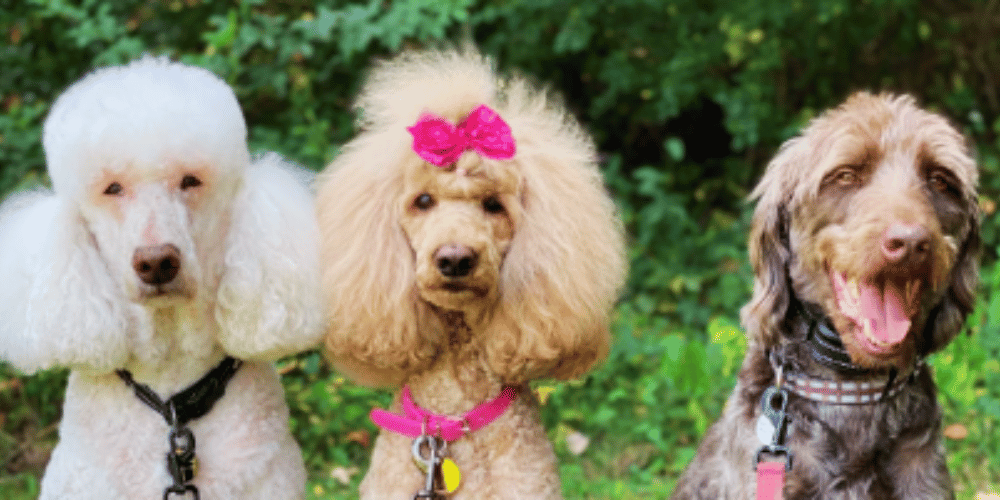
Moreover, allergic reactions can sometimes lead to skin inflammation and even infections, which can alter the texture of your dog's coat, making it more susceptible to matting.
If you notice your dog's skin is irritated or they are grooming themselves more than usual, it might be time to consult a veterinarian. Identifying and managing allergies can not only improve your dog's overall health but also reduce the risk of mats forming in their coat. Regularly incorporating hypoallergenic shampoos and conditioners into your dog's grooming routine can also help soothe their skin and prevent hair matting.
The Connection Between Playtime and Mats
Active dogs are joyful dogs, but with great play comes the increased risk of matted fur. Dogs that engage in rough-and-tumble play or love to dig and roll around will often find their hair in a bit of a tangle afterward. The physical activity causes friction, which in turn can lead to the entwining of dead hair and dead skin, creating the perfect storm for mats to form. This is particularly true for dogs with longer coats, but even short-haired breeds are not immune to the occasional mat, especially if they have a dense undercoat.
To keep your dog's skin and coat healthy, it's important to brush your dog regularly, ideally after a big play session. This helps to remove any debris, loose hair, and potential tangles before they develop into more problematic mats.
For dogs that are highly active, owners might need to tailor their grooming routine to include more frequent brushings and inspections of the dog's body to catch any signs of matting early. By doing so, you can ensure that your dog's post-playtime relaxation is as comfortable and carefree as the fun they had.
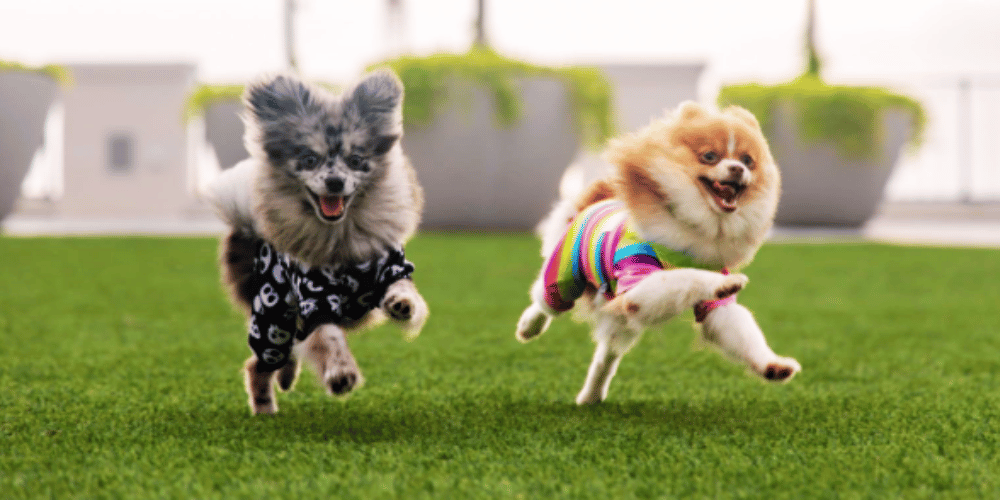
Home Grooming vs. Professional Help
While many pet owners feel comfortable handling minor mats at home, there are times when a professional groomer is necessary. They have the expertise and tools to handle severe matting without causing distress or injury to your dog.
The Emotional Toll of Matted Hair
Matted fur isn't just physically uncomfortable for dogs; it can also affect their mood and behavior. Ensuring your dog's coat is mat-free is part of providing them with a happy and stress-free life.
Understanding Seasonal Shedding
Seasonal changes can lead to more fur being shed, increasing the risk of mats. Regular grooming during these periods is even more critical to keep your dog's coat healthy and mat-free.
Choosing the Correct Brush
Using the correct brush for your dog's coat type is essential. Pin brushes are suitable for long-haired breeds, while slicker brushes can help prevent mats in dogs with shorter or silkier hair.
The Importance of a Grooming Routine
Establishing a regular grooming routine is vital for preventing mats. Whether it's daily, weekly, or monthly, consistency will help keep your dog's coat in the best condition possible.
The Role of Conditioners and Sprays
Using a leave-in conditioner can help prevent matting by keeping the fur smooth and less likely to tangle. Detangling sprays can also be used during brushing to ease the process and protect the coat.
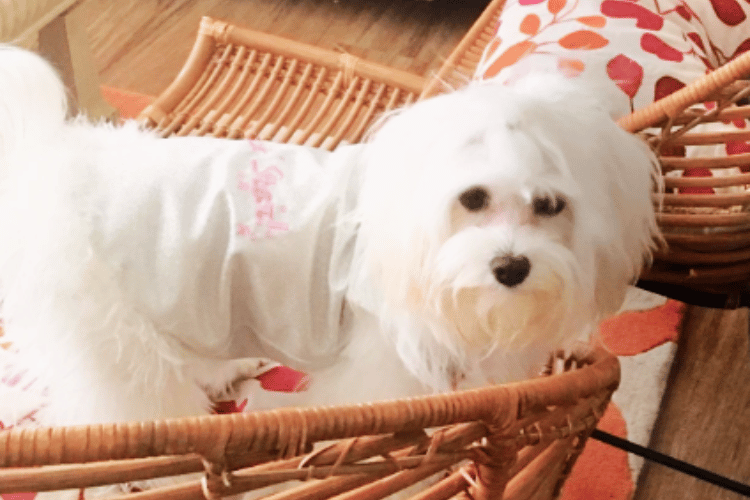
Addressing the Sensitive Areas
Mats often form in sensitive areas like the inner legs, behind the ears, and where the rear legs meet the body. Paying special attention to these areas during grooming can prevent discomfort for your dog.
The Genetics of Matting
Some dogs are genetically predisposed to matting due to their coat characteristics. Understanding your dog's genetic background can help you tailor your grooming approach to their specific needs.
Lifestyle and Activity Level
An active dog is more likely to get mats due to outdoor activities that can cause their hair to tangle. Adjusting your grooming routine to match your dog's lifestyle is crucial for preventing mats.
Summary
Matted dog hair is a common issue that can cause discomfort and health problems for your furry friend. Understanding the causes, such as the type of coat, grooming habits, and environmental factors, is key to prevention.
Regular brushing, using the right tools, and maintaining a proper diet all contribute to a healthy, mat-free coat. For severe cases, professional grooming may be necessary. By staying informed and proactive, you can ensure your dog remains comfortable and happy.
FAQ Section
How often should I brush my dog to prevent matting?
The frequency of brushing depends on your dog's coat type. Long-haired and double-coated breeds may require daily brushing, while short-haired breeds might need it less often. Establish a routine that works for your dog's specific needs.
Can matting cause any serious health issues for my dog?
Yes, matting can lead to skin irritation, infections, and even restrict movement if severe. It's essential to address mats promptly to avoid these health concerns.
Should I try to cut out mats at home?
If mats are small and isolated, you may be able to carefully trim them out with the proper tools. However, for larger or more complicated mats, it's best to seek the help of a professional groomer to avoid injuring your dog.
Thank you for visiting LegitLists we hope this helps you make a legitimate choice!






